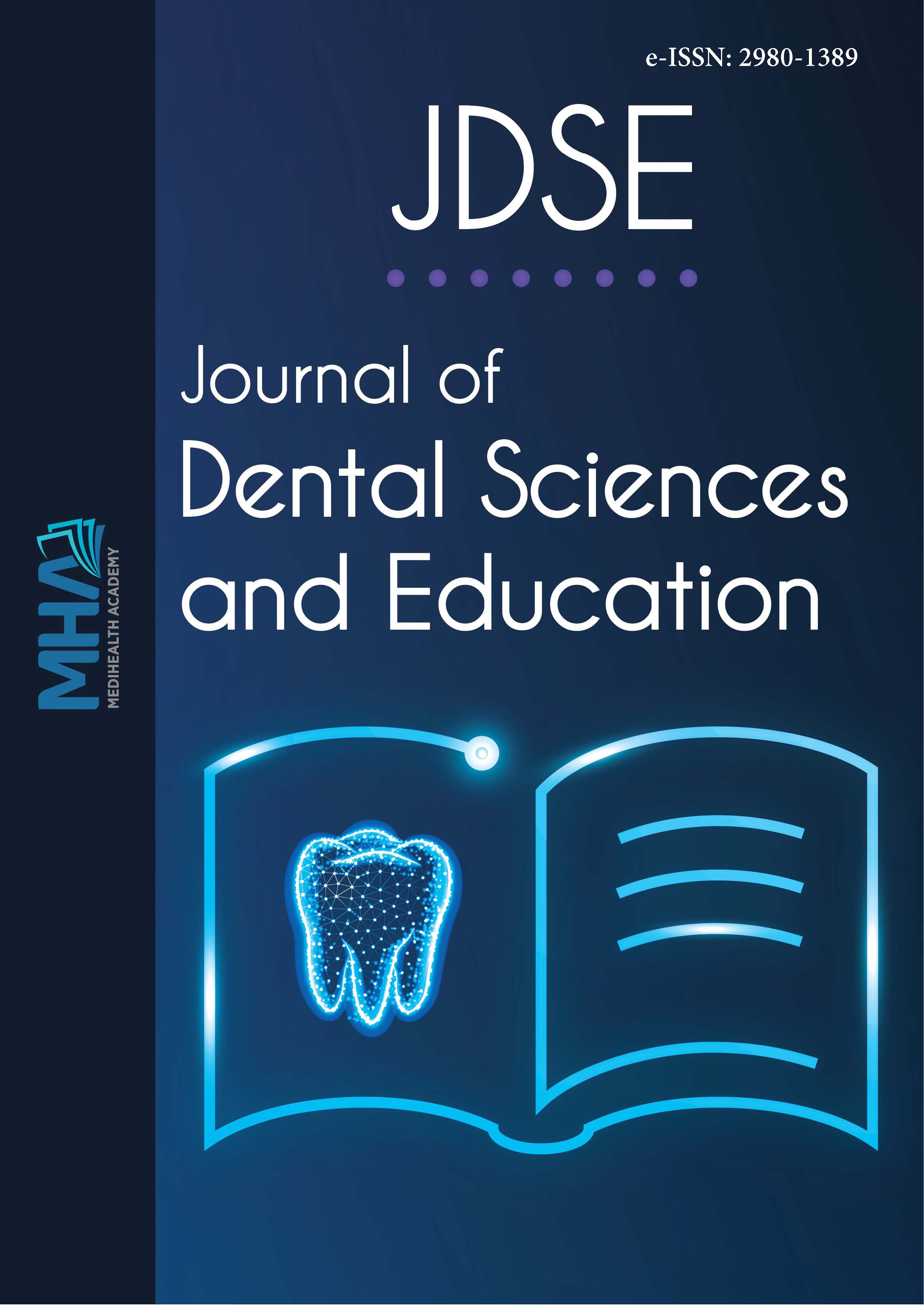1. von Arx T. Apical surgery: a review of current techniques and outcome.Saudi Dent J. 2011;23(1):9-15.
2. Lieblich SE. Current concepts of periapical surgery: 2020 update. OralMaxillofac Surg Clin North Am. 2020;32(4):571-582.
3. Jang Y, Hong HT, Chun HJ, Roh BD. Influence of apical root resectionon the biomechanical response of a single-rooted tooth-part 2:apical root resection combined with periodontal bone loss. J Endod.2015;41(3):412-416.
4. von Arx T, Janner SF, Jensen SS, Bornstein MM. The resection angle inapical surgery: a CBCT assessment. Clin Oral Investig. 2016;20(8):2075-2082.
5. Naumann M, Adali U, Rosentritt M, Happe A, Frankenberger R,Sterzenbach G. Effect of apical root resection, orthodontic extrusion,and surgical crown lengthening on load capability. Clin Oral Investig.2023;27(8):4379-4387.
6. Ekici Ö, Aslantaş K, Kanık Ö, Keles A. Temperature and time variationsduring apical resection. Acta Odontol Scand. 2021;79(2):156-160.
7. Angerame D, De Biasi M, Lenhardt M, et al. Root-end resection withor without retrograde obturation after orthograde filling with twotechniques: a micro-CT study. Aust Endod J. 2022;48(3):423-430.
8. von Arx T, Steiner RG, Tay FR. Apical surgery: endoscopic findingsat the resection level of 168 consecutively treated roots. Int Endod J.2011;44(4):290-302.
9. Deniz S. Investigation of individuals’ e-health literacy andcyberchondria levels. İnsan İnsan Derg. 2020;5(24):84-96.
10. McMullan M. Patients using the Internet to obtain health information:how this affects the patient-health professional relationship. PatientEduc Couns. 2006;63(1-2):24-28.
11. Al-Silwadi FM, Gill DS, Petrie A, Cunningham SJ. Effect of socialmedia in improving knowledge among patients having fixed applianceorthodontic treatment: a single-center randomized controlled trial. AmJ Orthod Dentofacial Orthop. 2015;148(2):231-237.
12. Madathil KC, Rivera-Rodriguez AJ, Greenstein JS, GramopadhyeAK. Healthcare information on YouTube: a systematic review. HealthInformatics J. 2015;21(3):173-194.
13. Hançerlioğulları D, Türkyılmaz A, Barış SD, Erdemir A. YouTube as aninformation and education source for use of mineral trioxide aggregatein endodontics: quality and content analysis. Turkish Endodontic J(TEJ). 2023;8(2):57-61.
14. Bariş K, Karşiyaka Hendek M, Olgun E. Evaluation of the quality ofperi-implantitis videos on YouTube. J Craniofac Surg. 2023;34(6):1813-1816.
15. Özbay Y, Çırakoğlu NY. YouTube as an information source forinstrument separation in root canal treatment. Restor Dent Endod.2021;46(1):8.
16. Staziaki PV, Santo IDO, Skobodzinski AA, Park LK, Bedi HS. Howto use YouTube for radiology education. Curr Probl Diagn Radiol.2021;50(4):461-468.
17. Nickles MA, Pavelka M, Mervak JE. Onychomycosis on YouTube: across-sectional analysis. Skin Appendage Disord. 2022;8(4):307-311.
18. Hucíková A, Babic A. Medical informatics idle YouTube potential. StudHealth Technol Inform. 2017;238:132-135.
19. McMahon KM, Schwartz J, Nilles-Melchert T, Ray K, Eaton V,Chakkalakal D. YouTube and the achilles tendon: an analysis of internetinformation reliability and content quality. Cureus. 2022;14(4):e23984.doi:10.7759/cureus.23984
20. Turco C, Collà Ruvolo C, Cilio S, et al. Looking for cystoscopy onYouTube: are videos a reliable information tool for internet users? ArchItal Urol Androl. 2022;94(1):57-61. doi:10.4081/aiua.2022.1.57
21. Tamošiunaite I, Vasiliauskas A, Dindaroğlu F. Does YouTube provideadequate information about orthodontic pain? Angle Orthod.2023;93(4):403-408. doi:10.2319/072822-527.1
22. Menziletoglu D, Guler AY, Isik BK. Are YouTube videos related todental implant useful for patient education? J Stomatol Oral MaxillofacSurg. 2020;121(6):661-664.
23. Atilla AO, Öztürk T. Evaluation of YouTube internet platform that canbe used as information source for upper jaw expansion procedure withvideo analysis. Selcuk Dent J. 2020;7(3):494-499.
24. Şahin SC. Evaluation of YouTube videos on porcelain laminate veneers.Acta Odontol Turc. 2021;38(1):19-27.
25. Hassona Y, Taimeh D, Marahleh A, Scully C. YouTube as a source ofinformation on mouth (oral) cancer. Oral Dis. 2016;22(3):202-208.
26. Oremule B, Patel A, Orekoya O, Advani R, Bondin D. Quality andreliability of YouTube videos as a source of patient information onrhinoplasty. JAMA Otolaryngol Head Neck Surg. 2019;145(3):282-283.
27. Yavuz MC, Buyuk SK, Genc E. Does YouTube™ offer high qualityinformation? Evaluation of accelerated orthodontics videos. Ir J MedSci. 2020;189(2):505-509.
28. Singh AG, Singh S, Singh PP. YouTube for information on rheumatoidarthritis—a wakeup call? J Rheumatol. 2012;39(5):899-903.
29. Gaş S, Zincir OO, Bozkurt AP. Are YouTube videos useful for patientsinterested in botulinum toxin for bruxism? J Oral Maxillofac Surg.2019;77(9):1776-1783.
30. Hutchison CM, Cave V, Walshaw EG, Burns B, Park C. YouTube™ as asource for patient education about the management of dental avulsioninjuries. Dent Traumatol. 2020;36(2):207-211.
31. ElKarmi R, Hassona Y, Taimeh D, Scully C. YouTube as a source forparents’ education on early childhood caries. Int J Paediatr Dent.2017;27(6):437-443.
32. Er N, Çanakçı BC. Quality assessment of apical resection videos onYouTube: a joint study of oral surgery and endodontics. Euroasia JMath, Engineering, Nat Med Sci. 2023;10(28):184-196.

